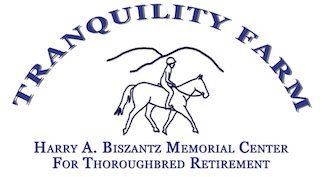ARCADIA, Calif. — Lese Majeste, officially considered age 12, awoke on the first day of the new year to a whole new world. After nine campaigns and 190 starts in places like Belmont, Saratoga, Hialeah, Calder, Gulfstream, Suffolk and Rockingham–mostly Suffolk and Rockingham–he found himself in a roomy paddock, staring at the rolling hills outside the town of Tehachapi, Calif., population 26,843, elevation 2,000 feet.
He was retired, at long last. There would be no more $4,000 claiming races, no more gray, slush-filled winters in Boston, no more trips to the Northhampton Fair. He had served his time, and then some. Now, as a resident of Tranquility Farm, Lese Majeste could count himself among the lucky pensioners who have found safe haven in a proper equine retirement community.
In the spirit of full disclosure, let it be known that this reporter proudly serves as a member of the Tranquility Farm board of directors. There is no heavy lifting, and the occasional meetings are made more than tolerable by people like Trudy McCaffery, Gary Biszantz, John Russell, Rollin Baugh, John Amerman and Priscilla Clark, who runs the farm.
Tranquility is not alone in this endeavor. Thank goodness. Organizations exist from coast to coast–ReRun, Thoroughbred Retirement Foundation, California Equine Retirement Foundation, Glen Ellen Farm, United Pegasus, and others–dedicated to the proposition that race horses without a breeding future deserve a safe and honorable life once their pari-mutuel use has been exhausted.
Such organizations depend upon the kindness of strangers. Problem is, they never know when the next benefactor will appear, if at all. Then along comes a guy like Tim O’Sullivan, and just like that, another angel gets his wings.
O’Sullivan is a 60-year-old retired New York City employee who has been paying close attention to the ponies since his younger days, when he ran bets for the bookies in his native Philadelphia. With all modesty, he says he’s no gorilla, but he’s held his own as a player, especially that day in May of 1993, when he was the only guy in town to hit the Aqueduct pick six worth about $54,000. On an $8 ticket, no less.
“I was king of New York,” he said, “at least for one day.”
About that same time, Lese Majeste, a son of Nasty and Bold, was getting ready for his debut, which he finally made for trainer Rich Schlosberg at Belmont Park on July 2, 1993. In September of that year he broke his maiden in open company, going 11 furlongs on the Belmont grass.
By the end of 1999, Lese Majeste had run 123 times. He was long gone from the fields of Belmont, by then running for a $4,000 tag at Suffolk Downs. Racing for Pearl and Carlos Figueroa, Lese Majeste won three of 35 starts in 2000 and was working on an 0-for 31 run in 2001 when he was entered in a mile and 70-yard race at Suffolk last Nov. 26. That’s when O’Sullivan noticed him.
“I’ve played the New York tracks most of my life,” said O’Sullivan, who now lives upstate in Woodstock and patronizes the Capitol OTB network. “I’ve seen the horses who hold up the racetrack–running for $40,000, $30,000, $25,000. All of a sudden, it’s a dark day at Aqueduct, you’re looking at the Form and there they are, running somewhere else for $2,500. When I finally noticed Lese Majeste, I said, ‘Not this time.'”
Putting 190 starts into perspective is difficult, even though the total is not unprecedented. Every generation produces that handful of runners who defy the odds of survival. Scimitar, a foal of 1924, ran 279 times. Alexis, from the crop of 1942, raced 253 times. Tulyar’s Veil, foaled in 1962, racked up 211 starts.
So who is to say when enough is enough, when horses are private property, always changing hands? In the case of Lese Majeste, O’Sullivan took the bit. He connected with the Figueroas, then researched retirement organizations through the internet, making contact with both Tranquility Farm and the TRF. On a cold November day on the Suffolk backstretch, he met Lese Majeste.
“I’m not an expert on how a horse should look,” O’Sullivan said. “All I saw was a guy that I thought had danced too many dances. Good horse trader that he is, Carlos showed me a few others. By the time I left, I ended up with three.”
O’Sullivan sent his other retirees to the Thoroughbred Retirement Foundation, while Lese Majeste joined the 76 other horses at Tranquility Farm. About 25 of them are eligible for adoption.
“He’s a cute guy, with a very sweet disposition,” Priscilla Clark said. “He’ll need about a year off, but by then I’m pretty sure he’ll be pasture sound. We may even be able to let kids ride him around the farm someday.”
That sounds good to O’Sullivan, who is planning to visit Lese Majeste in California next week. He wants no thanks, no pat on the back. He’d just like to be able to see the old horse in his new surroundings, content in his new life, and take the mental picture back home to Woodstock.
“I’ve always stayed away from people who call thoroughbreds ‘pigs,'” O’Sullivan said. “I think it’s an honor just to be around them. They are as beautiful a creature as was ever made. Standing there with Lese Majeste at Suffolk, I thought to myself, ‘Why in the name of God haven’t you done this before?’
“What surprised me most,” he added, “was that I thought people did this kind of thing all the time. I’ve learned otherwise. That’s why I’ve promised myself to try and retire one of these old guys every year.”

© 2002 Daily Racing Form Reprinted with permission
